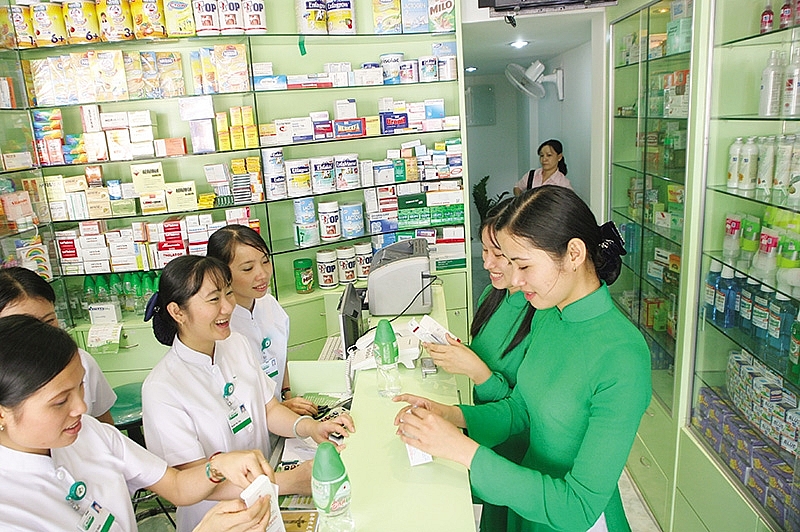FTAs to give fillip to medicine imports
 |
| Vaibhav Saxena, legal consultant at Vietnam International Law Firm |
Under current World Trade Organization (WTO) commitments, Vietnam has intentionally excluded the distribution services of pharmaceutical products and drugs. It appears that the country, at its own discretion, can regulate matters regarding this area, and therefore such distribution by foreign investors would be subject to Vietnamese laws.
The Law on Pharmacy is silent on the distribution rights of international companies. However, pursuant to domestic laws and regulations, foreign-invested enterprises (FIEs) are not allowed to distribute pharmaceutical products which are not manufactured by themselves, which is defined to include “finished dosage form, raw materials for drug manufacturing, vaccines, and biological medical products other than functional foods” for the purposes of prophylaxis, therapy, diagnosis of disease or modification of physiological functions of human bodies.
Prior to Decree No.54/2017/ND/CP guiding the Law on Pharmacy coming into effect, FIEs could focus on storage and transportation activities. Under Decree 54, FIEs are allowed to import pharmaceuticals, sell those imported by them to distributors or wholesalers, and build their own warehouses to preserve products.
So as to get over the statutory restriction on foreign ownership limit in the pharmaceutical distribution business, companies can follow the double-holding or multi-layer structure to invest in the drug distribution field in Vietnam.
Changes under the EVFTA and the CPTPP
Under both the EU-Vietnam Free Trade Agreement (EVFTA) and the Comprehensive and Progressive Agreement for Trans-Pacific Partnership (CPTPP), Vietnam reserves the right to adopt or maintain any measure with regards to cross-border trade in services and investment regarding pharmaceutical products, similar to WTO commitments.
Through these agreements, pharmaceutical imports and exports from the EU and CPTPP countries will be duty free. Consequently, overseas companies will be able to import pharmaceutical products with lower taxation, resulting in cost reductions.
FIEs will enjoy many opportunities via the CPTPP and EVFTA. Even though the substance restriction on the aforementioned matter is undeniable, the Vietnamese pharmaceutical market still offers many opportunities for potential suppliers.
Along with the constant increase in population and per capita GDP, the growth of the industry is significant. The gross revenue in the sector in 2017 reached almost $5.2 billion, 10.6 per cent more than in the previous year. It is expected to continue with an average growth rate of 10 per cent over the next five years.
According to statistics from the Drug Administration Department, domestically manufactured medicines only accounted for 48 per cent of the total market, which means that the majority still depends on imported sources.
Moreover, domestic manufacturing companies are still struggling to produce most of the high-quality and newly-developed drugs due to a lack of technology and finance, only being able to manufacture generic or herbal medicines. Research and development activity has been carried out, but in a very limited manner.
Along with the entry of the major trade deals, taxes on pharmaceutical products will be reduced. This will encourage competition from foreign businesses, where patent drugs have more advantages than generic ones. Furthermore, the reduction of tax would lower costs when contributing products, which will boost the purchasing power of consumers.
Besides taxation, under the CPTPP, administrative procedures shall be transparent, objective, and efficient. Consequently, FIEs might boost the productivity of its business as the amount of time and money spent on administrative procedures is reduced.
Evidently, the importing rates of pharmaceutical products have been rapidly growing in recent years. Demand is mostly for proprietary, patented, and high-quality medicines. Hence FIEs in the nation, while waiting for the rights for direct distribution, are still profitable from importing activities.
 |
| Foreign investors in the local market can only sell imported medicine to wholesalers |
Overcoming hurdles
The most visible obstacles that foreign pharmaceutical companies in the country face are regulatory requirements. As explained, FIEs are granted import rights without distribution rights, and can only sell imported products to wholesalers.
Before doing so, they have to register their wholesalers with the Ministry of Health. The list of wholesalers that are eligible to purchase imported products from the relevant FIEs will be published on the ministry’s website.
Taking trade deals into consideration, one of the most significant aspects in the CPTPP is the stricter compliance requirements in terms of intellectual property (IP). Such provisions may impact some industries which benefit from certain grey IP areas, especially in pharmaceuticals. Strict requirements on IP mean the right to patent, and other IP of the pharmaceutical product would be better protected. However, this also makes it possible that FIEs could infringe on IP rights.
The present legal framework on the pharmaceutical distribution of FIEs, though quite extreme, appears to be appropriate and reasonable for the socioeconomic conditions of Vietnam. The country remains a developing nation with financial challenges for buying patents to self-manufacture essential pharmaceuticals.
Even with patents, the level and ability in technology and infrastructure do not allow locally-owned companies to manufacture such products. Thus, the need for imported pharmaceuticals in the country is still huge.
On the other hand, FIEs are normally strong companies with developed technology and infrastructure. The prohibition on the pharmaceutical distribution of FIEs, therefore, assures that FIEs cannot manipulate the price of imported products but negotiate with domestic distributors. To some extent, the permission of the government for domestic enterprises on pharmaceutical distribution makes it easier for consumers to access pharmaceuticals and protects the domestic industry.
In the near future, changes in policy to better manage the Vietnamese market of pharmaceutical distribution are unlikely to take place until the country has made significant transformations to its current socioeconomic conditions.
What the stars mean:
★ Poor ★ ★ Promising ★★★ Good ★★★★ Very good ★★★★★ Exceptional
Themes: Healthcare
Related Contents
Latest News
More News
- Sustainability a core value for DKSH’s vision (January 07, 2026 | 16:00)
- People encouraged to contribute and grow at AstraZeneca Vietnam (January 07, 2026 | 15:48)
- Dat Bike accelerates sustainable mobility (January 07, 2026 | 15:24)
- Innovation to support modern healthcare development (January 07, 2026 | 10:00)
- Six localities record double-digit growth as regional performance diverges in 2025 (January 06, 2026 | 18:00)
- E-commerce market undergoes transformation amid rising competition and regulation (January 06, 2026 | 17:54)
- Vietnam’s industrial output hits seven-year high in 2025 (January 06, 2026 | 17:47)
- GELEX’s credit rating outlook upgraded to 'Positive' by VIS Rating (January 06, 2026 | 16:49)
- Finance sector lays firm groundwork for 2026 after major reform (January 06, 2026 | 15:30)
- Vietnam’s seafood exports surpass $11 billion in 2025 (January 06, 2026 | 08:51)

 Tag:
Tag:




















 Mobile Version
Mobile Version